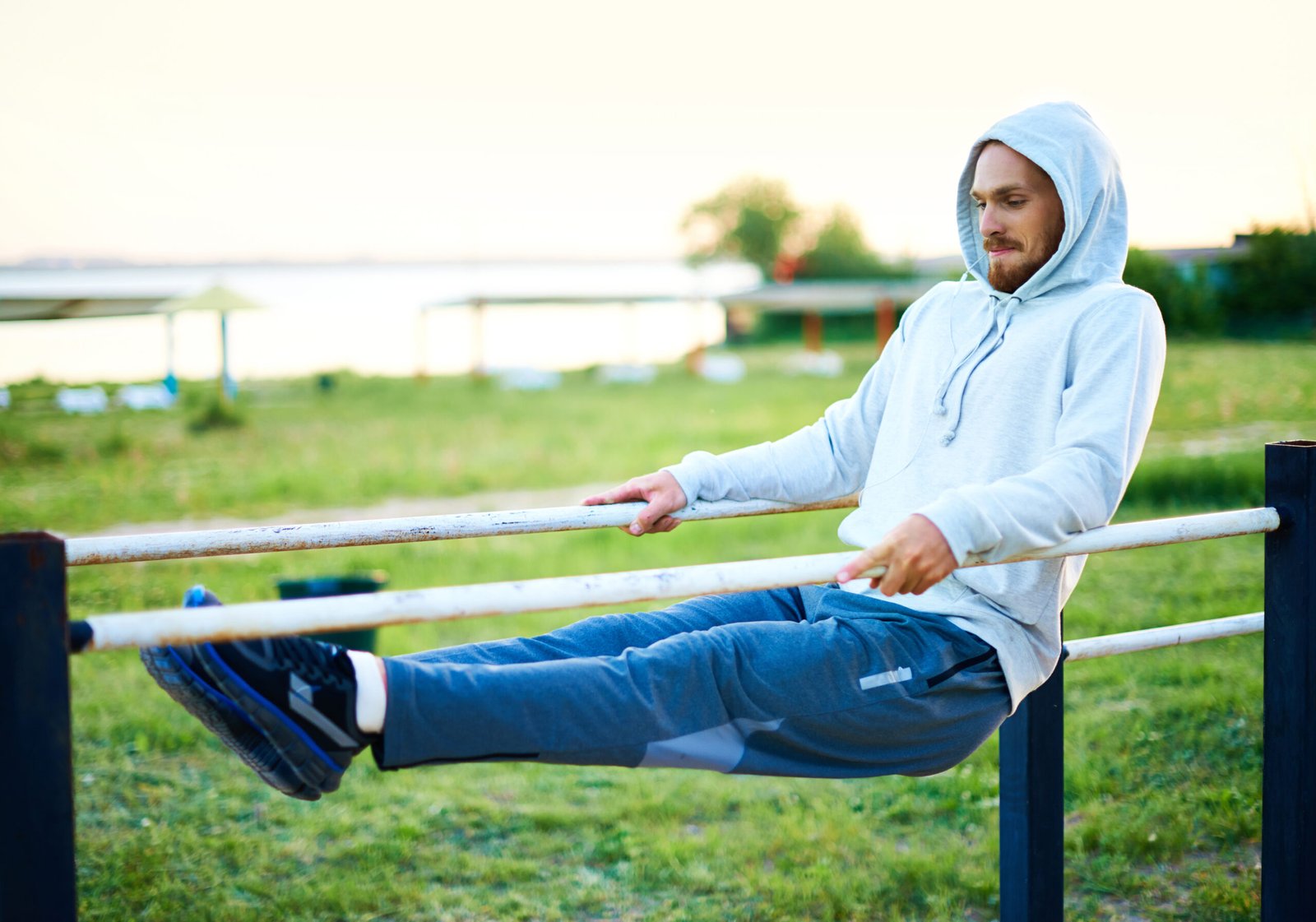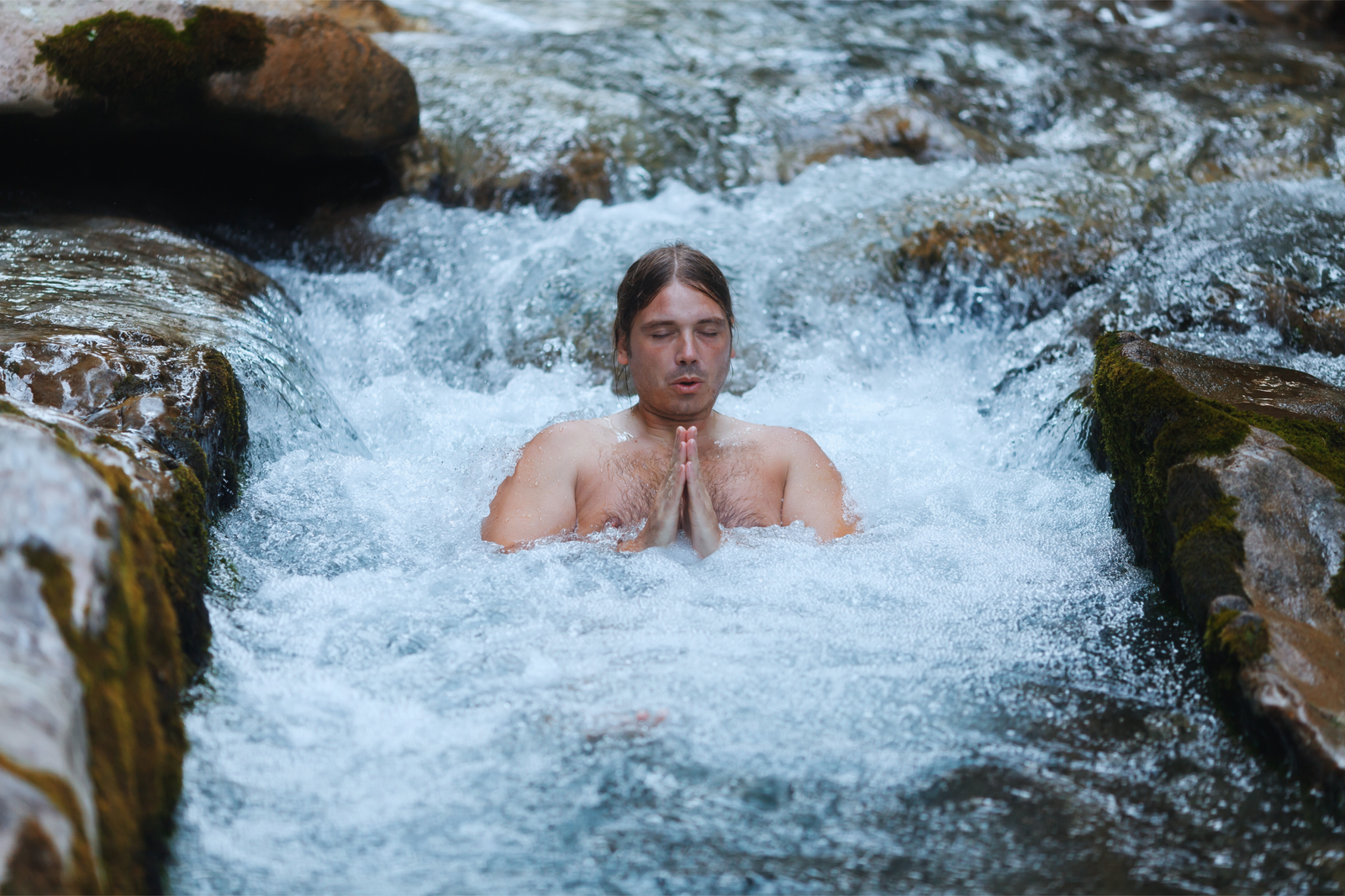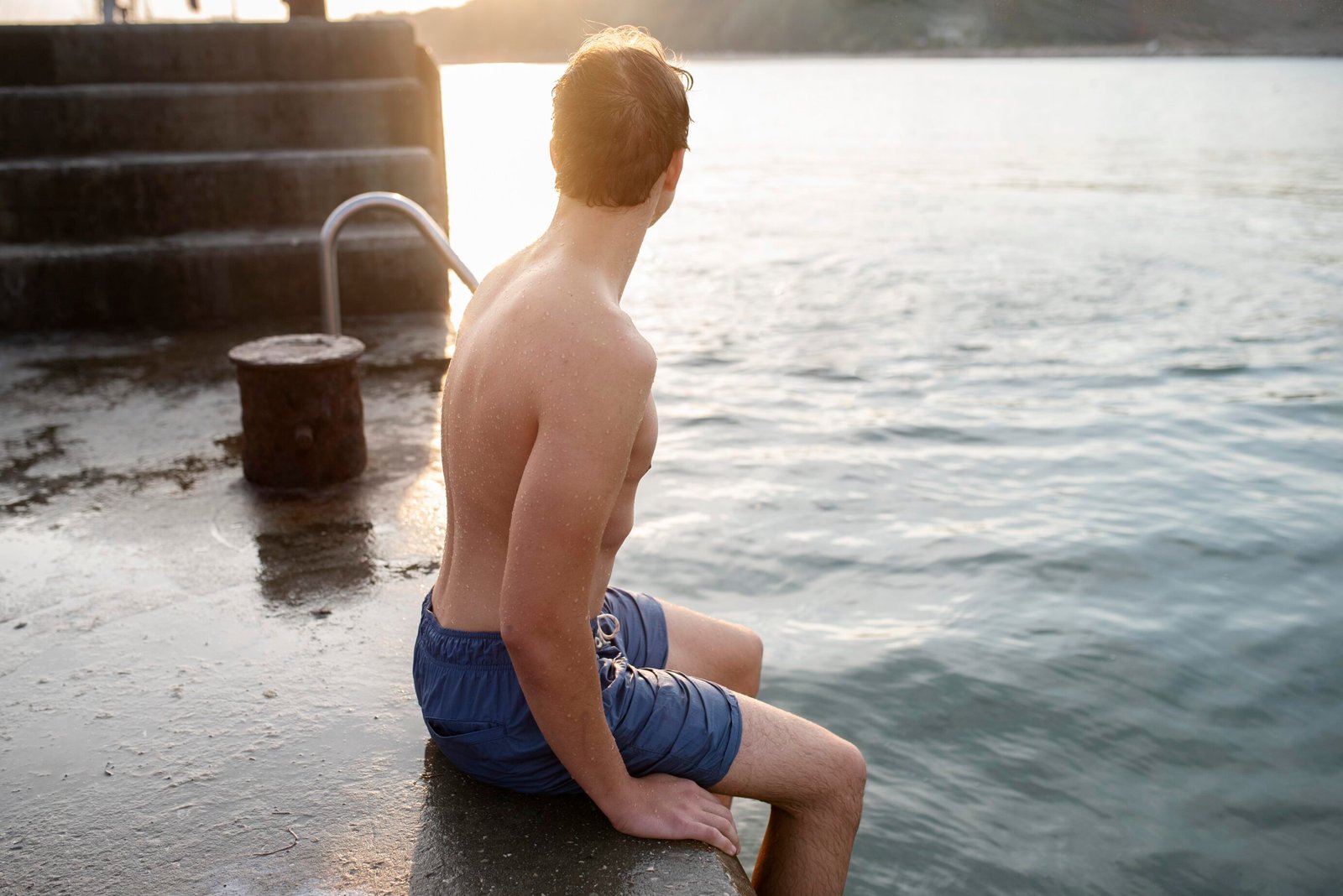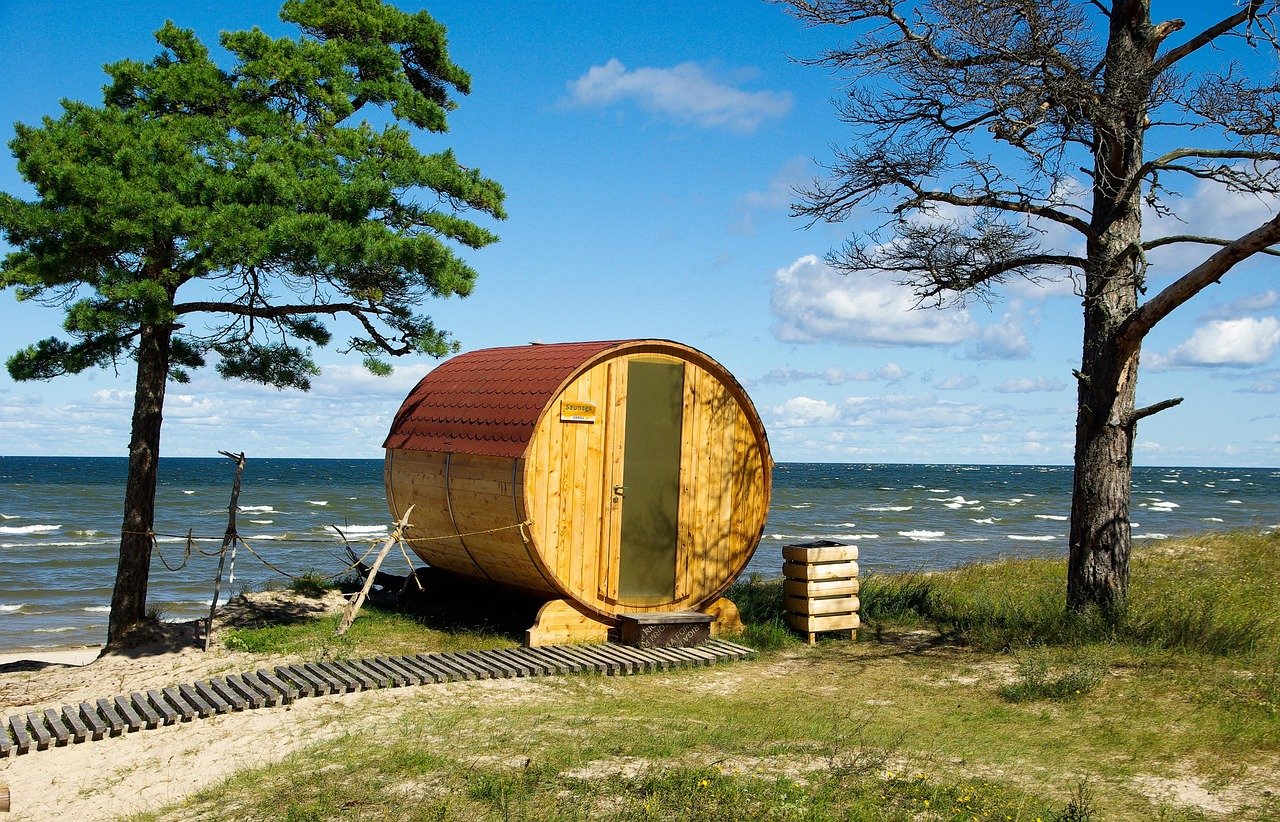The Ultimate Guide To Sauna Suits

Looking for a way to supercharge your workouts? Sauna suits, aka sweat suits, do precisely that—by trapping body heat, they mimic the intensity of traditional saunas.
While typical workout gear is designed to keep you cool, sauna suits do the opposite. They form a thermal barrier around your body, raising your core temperature and amplifying sweat output during physical activity.
Instead of spending thousands on a home sauna or spa session, you can reap similar benefits—like detoxification, weight loss, and muscle recovery—for under $200.
How Sauna Suits Work
Think of sauna suits as the opposite of dry-fit workout clothes. Instead of keeping you dry during exercise, they force you to sweat—a lot.
Most sauna suits are oversized so that you can move freely. They fit tightly around your neck, wrists, waist, and ankles to keep heat from escaping. Some models include hoods and face masks for even more heat retention.
When you wear a sauna suit during exercise, your heart works harder to cool your body. A 2020 study published in The Journal of Strength and Conditioning Research found that participants who exercised in sauna suits burned more calories than those who did not.
Sauna Suit vs. Layering Regular Clothes
You might wonder if you can wear multiple layers of regular clothes instead of buying a dedicated sauna suit. While layering can have a similar outcome, sauna suits work better for several reasons:
- Better mobility: Sauna suits let you move freely during workouts
- Sweat management: They pull moisture away from your skin while keeping you hot
- Lightweight material: They won’t weigh you down during exercise
- Less laundry: Wash one pair of pants and one jacket instead of multiple garments
Regular clothes in layers are bulky, restrictive, and uncomfortable. It’s much easier and more effective to invest in a sauna suit.
Types of Sauna Suits Available
Full Sauna Suits
Most sauna suits are two pieces—a jacket and pants. This combination provides the most heat retention and sweating benefits.
Individual Pieces
You can also buy sauna suit pieces separately:
- Sauna jackets for upper body workouts
- Sauna pants for lower body training
- Sauna hoodies and vests for lighter heat exposure
Materials
Sauna suits are typically made from:
- Coated nylon: Best for heat retention
- Neoprene: Durable and flexible
- Vinyl or PVC: Budget-friendly options
Popular Brands and Pricing
Well-known sauna suit brands include Boxraw, Kutting Weight, and Hotsuit. Hotsuit even makes models with reflective strips for safe nighttime exercise.
- Budget sauna suits: $30-$50
- Premium sauna suits: $90-$300
- Individual pieces: $15-$75
Both sauna suits for men and sauna suits for women are available in different sizes and fits.
Benefits of Using Sauna Suits
Weight Loss Support
Wearing a sauna suit during exercise helps you lose weight faster in two ways:
- More calories burned: Your heart works harder to cool your body, burning extra energy
- Increased fat oxidation: The same study from The Journal of Strength and Conditioning Research found that fat oxidation—the process of breaking down fat for energy—increased and remained elevated for up to one hour after high-intensity interval exercise with a sauna suit.
However, much of the immediate weight loss is water weight. You’ll gain this back when you drink fluids after your workout. The real benefit comes from burning more calories overall, which can help create the calorie deficit needed for fat loss.
Cellular Health and Heat Shock Proteins
When you expose your body to heat stress through sauna suit use, you activate powerful cellular repair mechanisms called heat shock proteins (HSPs). These proteins fix damaged proteins and protect cells from future stress.
Heat shock proteins have several important functions. HSP70, the most studied variety, helps prevent protein misfolding and assists in cellular repair processes. HSP90 supports proper protein function and helps maintain cellular stability during stress. HSP27 protects against oxidative damage and supports muscle recovery.
Some studies suggest that people who use heat therapy regularly have lower rates of cardiovascular disease and neurodegenerative conditions, possibly due to these cellular protection mechanisms.
The heat shock protein response kicks in when your core body temperature rises by just 1-2 degrees Fahrenheit, something easily achievable with sauna suits if you are maintaining your normal workout intensity.
Heat Acclimation Training
If you compete or work in hot environments, sauna suits can improve your heat tolerance. Regular heat exposure training with sauna suits creates physiological adaptations that help your body handle hot conditions more effectively.
The adaptation process typically takes 7-14 days of regular heat exposure. Most people see noticeable improvements in heat tolerance after just one week of consistent sauna suit training.
Your body adapts to heat stress in several ways:
- Earlier sweating onset means you start cooling yourself before your core temperature rises dangerously high.
- Increased sweat rate allows for more efficient cooling during heat exposure.
- Lower core body temperature during hot conditions means less stress on your cardiovascular system.
A reduced heart rate under heat stress indicates that your body is working more efficiently.
Wearing a sauna suit is similar to training with a weighted vest. If you can handle the extra strain, everything feels easier without it. That’s why athletes like boxers and wrestlers often run or jog in sweat suits: it helps build endurance so they’re better prepared when the pressure’s on.
Affordability and Accessibility Advantages
A premium sauna suit costs far less than a premium sauna. A quality home sauna costs $7,000-$40,000 and requires electrical work, ongoing maintenance, and significant space. Public saunas at spas or gyms often charge $20-50 per session.
Sauna suits eliminate these barriers. For less than $200, you get unlimited heat therapy sessions wherever you exercise. There’s no installation, no maintenance costs, and no monthly fees. You can use your sauna suit at home, the gym, outdoors, or when traveling.
The convenience factor is equally compelling. Traditional saunas require 20-45 minutes of heating time before use, followed by additional time for the actual session. Sauna suits work instantly—simply put them on and start exercising.
Many people find that a 20-minute workout with a sauna suit provides similar intensity to a 40-minute session without one.
Safety Guidelines
Before your workout
Always consult your doctor before using a sauna suit, especially if you have any underlying health conditions. In the hour before your workout, drink at least 8–16 ounces of water to ensure you’re properly hydrated. Wear regular workout clothes underneath the sauna suit—never wear them directly against your skin.
During your workout
Hydration is critical. Even if you’re not thirsty, drink water or electrolyte beverages every 10–15 minutes.
If you’re new to sauna suits, you don’t need to wear them for your entire workout. Start by wearing them for just 10–15 minutes, then remove them and finish your session without them. As your body adapts over the course of a few weeks, you can gradually increase the time you wear them during workouts.
Pay close attention to how you feel. Stop immediately and remove the suit if you notice dizziness, nausea, confusion, rapid heartbeat, or extreme fatigue. These are signs of overheating and can become dangerous quickly.
After your workout
Once you’ve removed the sauna suit, rehydrate with another 8–16 ounces of fluids to replace what you’ve lost through sweat.
Cool down gradually rather than jumping into cold water or air conditioning immediately. Your body needs 10–15 minutes to return to a normal temperature.
Keep monitoring how you feel for the next few hours since symptoms of overheating can sometimes take a while to show.
Certain people should never use sauna suits
This includes:
- Pregnant women
- People with heart conditions or blood pressure problems
- Those taking strong medications
- Elderly individuals
- Anyone new to exercise
- Children and teenagers should also avoid sauna suits due to their developing thermoregulation systems.
The NCAA banned sauna suits for weight cutting after three wrestlers died from dehydration and overheating, demonstrating the serious risks when these garments are misused.
If you doubt whether sauna suits are safe for you, don’t use them until you’ve spoken with a healthcare professional.
Choosing the Right Sauna Suit
Heat retention
Nylon-based materials trap heat best, while neoprene is more durable and flexible. Cheaper vinyl or PVC options will do the job but often lack comfort and harm the environment when disposed of.
Anti-rip construction
Look for anti-rip or tear-resistant material and reinforced seams, especially at stress points like knees and elbows. Good suits should withstand regular washing cycles and repeated use. Some premium sweat suits have multiple-layer systems that trap heat while pulling moisture away from your skin, preventing that clammy, uncomfortable feeling cheaper suits create.
Ventilation
Ensure your suit has strategically placed zippers or breathable mesh panels for heat regulation.
Proper fit
The suit should be loose enough for comfortable movement but tight at the wrists, ankles, and neck to retain body heat.
Care and Maintenance
Clean your sauna suit immediately after every use. The combination of sweat, heat, and moisture creates the perfect environment for bacteria growth. Without proper cleaning, your suit will develop terrible odors that may be impossible to remove, and bacteria buildup can cause skin irritation or infections.
Most sauna suits are machine washable and dryable but always check the care instructions first. Higher-end suits require air drying to preserve their specialized materials and heat-retention properties. Never use fabric softeners or bleach, as these can break down the heat-trapping coatings.
Store your sauna suit in a dry, well-ventilated area after it’s completely clean and dry. Replace it when it doesn’t make you as hot as it used to or when you see tears, holes, or permanent odors. A quality sauna suit typically lasts 2-4 years with proper care and regular use.
Getting the Most from Your Sauna Suit
For Healthy and Active People New to Sauna Suits
If you exercise regularly but are new to sauna suit training, start conservatively to avoid overheating. Rather than the full suit, begin with just the sauna jacket or pants during your first few sessions.
Light cardio sessions are great for using the full sauna suit. For strength training, it’s often more comfortable to wear just one piece—pants for leg days and the jacket for upper body workouts. This helps keep the target muscles warm without overheating your whole body.
Gradually increase your exposure time as your body adapts. Start with 10-15 minute sessions and add 5 minutes each week to build your heat tolerance safely.
Avoid outdoor use during summer months when temperatures exceed 75°F. Hot weather, direct sunlight, and heat-trapping clothing create dangerous overheating conditions even for experienced users.
Save outdoor sauna suit workouts for cooler months, or use air-conditioned indoor environments during hot weather. Winter and spring are ideal for outdoor sauna suit training.
Conclusion
Sauna suits offer an affordable and effective way to boost the intensity of your workouts. When used properly, they can help increase calorie burn, speed up recovery, and improve your tolerance to heat. But results come from consistency and, above all, safety.
Start slow, stay hydrated, and pay attention to how your body responds. Whether using a full suit or individual pieces, gradual progression is key to building heat resilience without overdoing it.
Finally, invest in a quality sauna suit. A well-made design can make a big difference in both comfort and performance. Sauna suits can be powerful in your training routine if used with care and intention.
What are your thoughts on sauna suits? Let me know in the comments below!
FAQs
Medical Disclaimer
The information contained in this post is for informational and educational purposes only. It is not intended to provide medical advice or to take the place of such advice or treatment from a personal physician. All readers/viewers of this content are advised to consult their doctors or qualified health professionals regarding specific health questions or before embarking on any new health or wellness routine, including saunas and cold plunging. Neither the author(s) nor the publisher of this content take responsibility for possible health consequences of any person or persons reading or following the information in this educational content. All viewers of this content, especially those taking prescription or over-the-counter medications, should consult their physicians before beginning any cold plunging routine or other health or wellness program.








